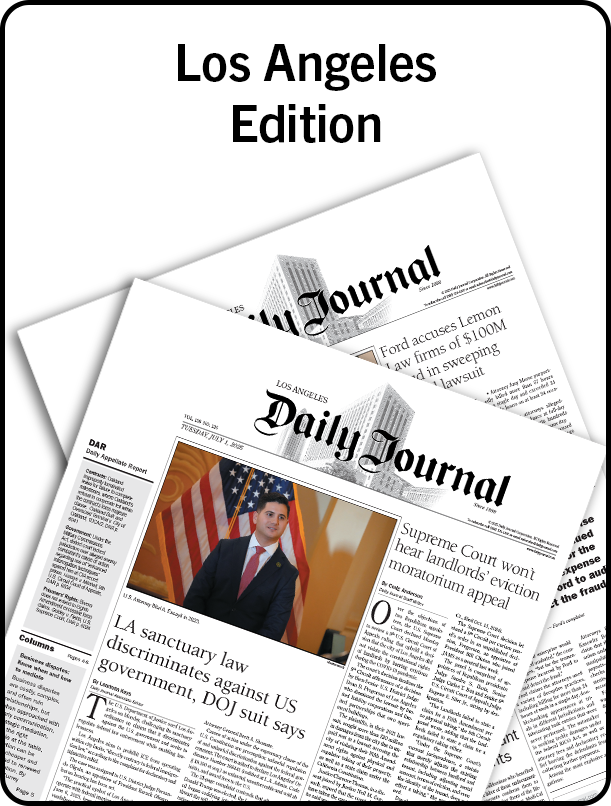Technology,
Evidence
Nov. 25, 2024
How virtual reality and spatial video will transform the courtroom
Virtual reality and spatial video are set to transform the courtroom by enabling jurors to experience evidence firsthand rather than merely observe it. Yet, the Federal Rules of Evidence weren't built for a world where technology brings evidence to life.




Nathan Missaghi
Nathan Missaghi is a J.D. candidate at Southwestern Law School and a Yoka Panish Fellow CALI Award recipient

The relationship between technology and law is evolving fast, and with virtual reality (VR) and spatial video, we're on the brink of a major shift in the courtroom. Inspired by my Evidence class with Professor Richard L. Jolly at Southwestern, I've been thinking about how these technologies could change the way evidence is presented and experienced. Imagine jurors not just watching footage of a multi-vehicle crash but stepping into the scene themselves.
Innovations like the Apple Vision Pro are bringing us closer to reality where evidence isn't merely something to be observed but something to be experienced. This isn't just an upgrade of current technology; it's a profound shift in how attorneys, judges, and jurors interact with and interpret evidence.
Traditional video evidence often leaves a lot up to interpretation. In court, a typical video showing the aftermath of an accident doesn't capture the chaos, the panic, or the feeling of everything happening. Video clips miss the heart of the moment, sense of urgency, shock, and the human impact. On the other hand, VR and spatial video completely transform how evidence is experienced in the courtroom. These technologies let jurors' step into the scene, feel the tension, and experience the crash like they were actually there, seeing the circumstances and causes unfold. The severity of the accident, fear, and confusion all come to life in a way that traditional video just can't capture.
Spatial video and VR allow jurors to experience the crash firsthand, immersing them at the moment and providing a deeper understanding that traditional video can't. They feel the impact, see the positions of the vehicles, hear the glass shattering and the car parts breaking. This kind of immersion gives jurors a deeper understanding of the emotional and physical pain and suffering, making it easier to grasp the human costs involved. It doesn't just help them understand the case; it makes them feel it. It brings everything to life in a way that completely shifts the trial's dynamic.
VR gets all the attention, but the real disruptor is spatial video. Spatial video is an underestimated technology that will redefine the courtroom over the next decade. With 360-degree detail, spatial video allows jurors to explore scenes from multiple angles without the barriers of headsets or complex setups. It's more accessible, faster to deploy, and easier to integrate, making it the practical choice for transforming how evidence is presented. In high-stakes cases like accidents or crimes, spatial video doesn't just show the scene, it puts jurors inside it, delivering clarity that traditional photos and video evidence can't.
This isn't just about car accidents--it's about transforming how we convey the truth in the courtroom. VR and spatial video have the potential to break down complex barriers to improve understanding in cases like product liability and medical malpractice. Jurors are no longer confined to expert opinions and lay witness testimony. With Spatial video, jurors can step into the reality of a medical device failure, observing its breakdown and the resulting consequences in real time. What was once a grey area issue has become a clear undeniable statement of truth.
The Federal Rules of Evidence weren't designed for a world where technology turns reality into something you can step into. VR and spatial video force us to rethink how we define and authenticate evidence in ways we never have before. Rule 901 was built for a time when evidence was straightforward--photos, documents, recordings. But how do you verify a virtual accident scene or confirm the authenticity of a 360-degree video? These aren't just technical questions; instead, they challenge us to redefine how we interpret evidence in the courtroom.
Technology and innovation aren't just about making trials more engaging; they're about redefining how jurors process and understand the evidence proffered to them. Instead of relying solely on expert testimony, jurors will now be able to interact with the evidence directly, confronting the reality of the case with personal knowledge.
Innovation doesn't wait for anyone, and the legal system can't afford to fall behind. We need rules and standards that keep up with technology. If we fail to adapt, we risk being left behind in yesterday's courtroom, while the truth advances without us.
Submit your own column for publication to Diana Bosetti
For reprint rights or to order a copy of your photo:
Email
Jeremy_Ellis@dailyjournal.com
for prices.
Direct dial: 213-229-5424
Send a letter to the editor:
Email: letters@dailyjournal.com




